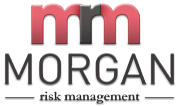Construction (Design & Management) Regulations (CDM) 2015: The basics
CDM 2015 Regulation basics
Construction (Design & Management) Regulations 2015
The CDM regulations 2007 have been superceeded by CDM regulations 2015, our team at Morgan Risk Management in Merthyr Tydfil have elaborated on the details below.
The CDM regulations became law on 6th April 2015.
The principal changes are as follows:
- Strengthening of client duties
- Introduction of domestic clients
- Replacement of CDM coordinator by a principal designer for the planning, managing, monitoring and coordination of pre-construction phase health and safety
- Principal designer and principal contractor will be required on all projects where there will be more than one contractor working on the project
- Replacement of explicit requirement for duty holder competence with need for appropriate skills, knowledge and experience
- Change to the HSE’s notification level – F10 is now only required for projects lasting more than 500 person days, or lasting more than 30 days with more than 20 workers simultaneously
What are the transitional arrangements for CDM coordinators?
When CDM 2015 came into force on 6 April 2015, there was a six month transitional period from 6 April 2015 to 6 October 2015.
For projects starting before 6 April 2015, where the construction phase has not yet started and the client has not yet appointed a CDM coordinator, the client must appoint a principal designer as soon as is practicable.
If the CDM coordinator has already been appointed, a principal designer must be appointed to replace the CDM co-ordinator by 6 October 2015, unless the project comes to an end before then.
In the period it takes to appoint the principal designer, the appointed CDM coordinator should comply with the duties contained in Schedule 4 of the new CDM 2015 Regulations. These duties reflect the existing requirements under CDM 2007 for the CDM coordinator, rather than requiring CDM coordinators to act as principal designers, a role for which they may not be equipped.
Construction phase plan
The contractor (if there is only one) or principal contractor (if there is more than one), is responsible for creating a construction phase plan. Under CDM 2015 requirements, a plan has to be created for any construction work.
Depending on the job, it should contain the following information:
- General project overview and programme with key points highlighted. Start and Finish!
- Responsibilities of key named individuals, duty holders and sub-contractors
- Emergency arrangements including fire arrangements and emergency contact details
- How hazards will be identified and risks managed as the work progresses (risk and method statements – RAMs)
- A risk register with a list of completed risk assessments for the project
- Location of welfare facilities which must meet the requirements within the regulations
- How induction and tool box talks will be organised and training standards confirmed for all workers
- How supervision will be organised especially in relation to new and inexperienced workers or where workers are operating in ones or twos
- How project meetings will be planned and organised
- Selection criteria and how work by sub-contractors is checked
- The contractor's site rules
It's also necessary to delineate how Part 4 of CDM 2015 - which contains site safety standards - will be met in relation to all sites. In particular how the following will be managed:-
- Potential for contact with asbestos and how this will be managed
- Reducing the risks of exposure to building dust
- How the potential for accidental contact with services will be managed – isolation arrangements by whom and when
- Risk from falls – when will work at height be managed and how?
- Collapsing structures and excavations – a demolition plan should be included where relevant
- Potential conflict with members of the public or other building users
Although it is not a legal requirement, a plan and description of the site / work location showing the following is very useful for work that has to be separated off from the main functions of the building:
- Signing in, and provision for, immediate hazard information e.g. on a whiteboard or notice board
- Escape routes
- First aid locations
- Gire points and emergency alarm locations (if relevant)
- Access / egress for deliveries, workers and visitors
- Separation of vehicles from people
- Waste disposal
- Site warning notices and information e.g. use of a whiteboard to describe issues of the day
For larger jobs, the plan should change and develop with the project as it progresses. Risk assessments for at least the start of the project are likely to be included within the plan and continually added to as the work progresses.
In order to have created the plan, the builder must take time to identify hazards which could affect the project, such as hidden services or the presence of asbestos, and say how these risks will be managed.
The Health and Safety File
The Health and Safety File is a record of documentation for the client or the end user which focuses on health and safety. The information it contains will alert those responsible for the management of health and safety risks during subsequent maintenance, repair and construction work. The amount of information needed in the Health and Safety File and the time and effort required to prepare it should be in proportion to the scale and design of the structure. Structures with minimal health and safety risks will call for a simple, straightforward file. Large structures or those involving significant risks will need more detail.
How the Health & Safety File is compiled
The principal designer is responsible for ensuring that the Health and Safety File is prepared.
Early on in the construction project, the principal designer will discuss the Health and Safety File with the client. This will help determine what information the client requires and how the client wishes the information to be stored and recorded. When the client’s requirements are known, procedures may need to be drawn up by the principal designer so that all those contributing to the Health and Safety File (e.g. designers and contractors) are aware of:
- What documentation is to be collected
- How the documentation is to be collected, presented and stored.
The principal designer details in the pre-construction information the requirements on how and when the information for the Health and Safety File is to be compiled and passed on. The principal contractor includes similar procedures in the Construction Phase Health and Safety Plan.
Morgan Risk Management offers support in compiling the Construction Phase Health and Safety plan and also the Health and Safety File of a project.
Throughout the project those who carry out design work (including contractors) need to ensure, so far as is reasonably practicable, that information about any feature of the structure which will involve significant risks to health and safety during the structure’s lifetime is passed to either the principal designer or to the principal contractor.
Providing this information on drawings allows for amendments if any variations arise during construction. It also allows health and safety information to be stored on one document, therefore reducing the paperwork.
CONTACT US
Thank you for contacting us.
We will get back to you as soon as possible
We will get back to you as soon as possible
Oops, there was an error sending your query.
Please try again later
Morgan Risk Management Ltd, Wattisham Rocky Road, Merthyr Tydfil, Wales, CF47 9JN
© 2024. The content on this website is owned by us and our licensors. Do not copy any content (including images) without our consent.


